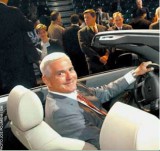
Bob Lutz: Life Lessons From the Car Guy
This fascinating excerpt from Bob Lutz’s book highlights a couple of key issues: one needs to have deep knowledge about an industry to make the right decisions, one needs to select the right leadership style for the organizational context, and finally if one wants to have a long last impact, one needs to institutionalize the change. The reason why Lutz failed to institutionalize is product develop process at Chrysler but believes that it will stick may have nothing to do with him: GM went through bankruptcy and the old ways may have been forced to retreat.
A few days later Lutz was interviewed about the book and the article by the WSJ. Click on
Categories: Strategic Management 4 | Topics | Decision Making | Turnarounds | Strategy Implementation - 782 | Topics | Institutionalizing Change | Leadership Style |

Speaking about Paul Feyerabend
This semester Lex Donaldson is teaching the Intellectual Foundation of Social Science class alone. But he asked me to come in and speak a bit about Feyerabend’s philosophy and my encounter with him when I took his undergraduate class on Ancient Philosophy at Berkekely.
Categories: Foundations of Social Sciences | Resources |

The Conglomerate Discount in USA is 9%
Breaking up big companies is back in vogue. In Australia, the Fosters group is spinning out its Wine business because the expectation is that the parts individually are worth more than valuation of whole company. Read the full story in on Economist.com and why emerging markets don’t have this conglomerate discount.
Categories: Strategic Management 3 | Topics | Corporate Strategy |
Nokia Announces its Turnaround strategy: Ally with Microsoft for High-end Smartphones
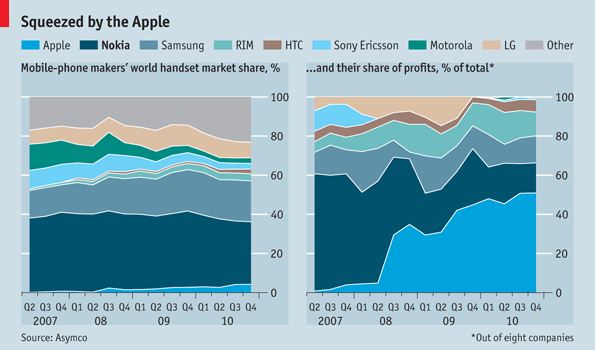
You can read the full story behind this graph on Economist.com/
Categories: Strategic Management 4 | Topics | Turnarounds |

Does Microsoft have Game Changing Device with Kinect
From NY Times:
Microsoft has long salivated over the notion of controlling the living room and becoming a major entertainment force. Kinect may well stand as its best bet yet for turning that vision into a reality. “This is an incredibly amazing, wonderful first step toward making interactivity in the living room available to everybody,” says Mr. Ballmer, while cautioning that Microsoft still has “a lot of work to do.”
The first Kinect prototype cost Microsoft $30,000 to build, but 1,000 workers would eventually be involved in the project. And now, hundreds of millions of dollars later, the company has a product it can sell for $150 a pop and still turn a profit, Mr. Mattrick says. (People who don’t have an Xbox can pay $300 for a package that includes the console, Kinect and a game.)
For Mr. Ballmer, Kinect is far more than a business opportunity or a pleasant diversion for consumers. It offers a moment to prove to investors and company directors that Microsoft is capable of an Applesque, game-changing moment under his leadership.
Categories: Strategic Management 4 | Topics | Economic Logic Analysis | New Business Model |
Siemens Tightens up it Corporate Strategy
The Economist published a great story on how Siemens, battered by bribery scandal, recruited an outsider CEO and now has started to leverage the potential benefits of owning several business that could be run as stand-alone companies, operating at large scale all across the world, and avoiding to over-engineer products. The story illustrates most of the key ideas of SM3, including how to implement a corporate strategy.
Read: A Giant Awakens
Europe’s biggest engineering firm used to be known for two things: making everything but a profit; and scandal. Now things look very different
Categories: Strategic Management 3 | Topics | Corporate Strategy | Corporate Growth | Innovation | Acquisitions | Mergers | Geographic Expansion |

Why Starbuck’s Failed in Australia
When Starbucks entered the Australian market in 2000, it was one of the biggest coffee chains globally, opening one new store every day somewhere in the world, notes Patterson. Its success in the US, which had not previously enjoyed a strong coffee-drinking culture, had given the brand great confidence to enter other markets including Japan (1996) and China (1998). The company now has more than 15,000 stores in 44 territories. But in mid 2008, Starbucks’ management announced that it would close 61 of its 84 Australian stores. The closures took place swiftly – within one month. Losses were enormous, including 685 jobs and A$143 million. Just 23 Australian stores were left operating in prime locations. What went so wrong?
Read the full analysis by Profeessors Paul Patternson and Marc Uncles in Knowledge @ The Australian School of Business.
Categories: Strategic Management 3 | Topics | Geographic Expansion |

James Yuille Strategies for Networking
Don’t front up at a neworking function expecting to make a sale. “Networking is an opportunity to meet people in a neutral environment, to form relationship and to built trust. People who are too anxious about making a dollar will only ostracise themselves from the rest of the group.” Other tips include: be open-minded, don’t be pushy, be a good listener and think to long-term. [...] “I have known someone [though networking] for 12 year and only last year did that relationship come up with business.”
From: BRW, September 2—8, 2010, p. 38
Peter Murmann: These tips can be applied not only to win business but also to advance one’s career.
Categories: Strategic Management 4 | Topics | Networking |
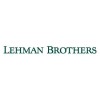
Lehman Brothers’ did not Walk to Talk of its Mission Statement
BRW reports: “Lehman Brothers’ mission statement nodded in all the right directions. It told employees and investors that
We are one firm, defined by our unwavering commitment to our clients, our shareholders, and each other. Our mission is to build unrivalled partnerships with, and value for, our clients, through knowledge, creativity, and dedication of our people, leading to superior returns to our shareholders.
However, the investment bank did exactly the opposite, gorging on low-quality mortgages and nearly felling the global financial system. Rather than ‘set and forget’, [mission statements] should be part of a conversation between staff and management.”
(BRW August 26-October 6, 2010, p. 78)
Categories: Strategic Management 1 | Topics | Fundamental Objective | Communication | Strategy Implementation - 782 | Topics | Fundamental Objective |
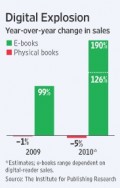
Dramatic Challenge to Barnes & Nobles Business Model
This one of the most vivid examples of challenges to the existing business model of a firm. The Wall Street Journal reports:
After nearly 17 years of consistent growth, Barnes & Noble is stumbling. Revenue fell 3% to $5.12 billion for the fiscal year ended Jan. 31, 2009, while earnings dropped about 45% to $76 million.
When it launched the iPad last month, Apple championed a new approach to e-book pricing. Earlier this year, most large publishers agreed to establish a so-called agency model, where the publisher receives 70% of the digital price while e-book sellers act as agents and receive 30%. While some best sellers remain at $9.99, many major authors are priced at $12.99 or $14.99.
Categories: Strategic Management 4 | Topics | Economic Logic Analysis | New Business Model |
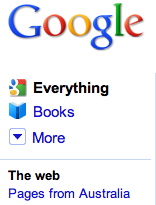
Google’s New Search Homepage: Integrating Quantitative and Qualitative Data as well as Intuitions
Jump to minute 1:47 of the Business Week video.
Categories: Strategic Management 3 | Topics | Innovation | Strategic Management 4 | Topics | Decision Making |


